The Olivetti Underwood Factory was designed by acclaimed American architect Louis Kahn in 1966 and completed in 1970. Olivetti, an Italian company, commissioned Kahn the building to manufacture their Underwood line of typewriters and related products.
Olivetti Underwood Factory Technical Information
- Architects1-4: Louis Kahn | Biography & Bibliography
- Collaborators: Renzo Piano
- Location: 2800 Valley Road, Harrisburg, Pennsylvania, USA
- Client: Olivetti-Underwood Corporation
- Material: Concrete
- Typology: Industrial Architecture / Factory
- Project Year: 1966 – 1970
- Drawings: © Louis Kahn Architects
I use the square to begin my solutions because the square is a non-choice, really. In the course of development, I search for the forces that would disprove the square….
– Louis Kahn5
Olivetti Underwood Factory Photographs
History of the Olivetti Factory
In 1966 Italian typewriters company Olivetti asked architect Louis Kahn to design their factory in Harrisburg, Pennsylvania. Joseph Rykwert, an architectural historian and critic, said corporations don’t usually hire famous architects to create their factory buildings. Those architects probably wouldn’t be interested anyway because of the limited creative possibilities. Olivetti, however, “was then the most discerning patrons of industrial buildings – anywhere,” according to Rykwert, and Kahn was happy to work for a client as sophisticated as Olivetti.
The critical design limitation was that the factory floor needed to be as open as possible to enable rapid reconfiguration of equipment to meet changing market requirements. The easy way to achieve this limitation would have been to build the factory as a steel frame structure. Still, Kahn didn’t build any structures of that type after 1950, preferring the more monumental appearance he could achieve with concrete and brick materials. Kahn, relying on the expertise of August Komendant, a structural engineer and Kahn’s preferred collaborator, instead designed the building in concrete. At that time, Komendant was already an authority on techniques for significantly increasing concrete strength by prestressing it, making it possible to build more graceful structures than with ordinary concrete.
The Olivetti-Underwood Factory consists of 72 prestressed concrete units locked together in an 8×9 grid. Each unit looks like a square dish with clipped corners perched on top of a relatively thin concrete column. More precisely, the dish is a prismatic concrete shell 6 inches (15 cm) thick, 30 feet (9 m) above the factory floor, and 60 feet (18 m) across, covering 3600 square feet (334 m²) of the roof. Rainwater drains from the roof down a pipe in the center of the column. Because the outer four corners of each unit are clipped, a void is left at the place where the four units meet, allowing natural light to reach the factory floor through a translucent skylight.
Kahn was interested in this type of structure for some time, having designed a prototype Parasol House in 1944 for prefabricated housing in the post-war years. Never built, it featured a flat roof supported by a slender column and was designed to be used either as a stand-alone housing unit or in combination with other units to form a linear structure. A precedent was the “Great Workroom” in the Johnson Wax Headquarters, designed by Frank Lloyd Wright and completed in 1939.
Renzo Piano’s Contribution
The detailed drawings of the skylights have the official stamp of Louis Kahn Architects with the words “in collaboration with Renzo Piano Architect” at the end. These are unique in the whole production of Kahn’s office.
Louis Kahn discussed with the French engineer Le Ricolais the problem he had designing the factory’s skylights. He suggested showing the plans to young Italian architect Renzo Piano who used his connections with the Olivetti company to gain the equivalent of an internship with Kahn for several months while the factory was being designed, working primarily on the roofing system.
Years before, in collaboration with Marco Zanuso, Renzo Piano had designed the skylights in reinforced polyester of the Olivetti factories in Scarmagno (1967) and Crema (1968). The Italian architect designed a structure similar to those he had already built: a square skylight 6,4 meters on each side, made of 16 pyramidal elements in reinforced polyester (1,60 by 1,60 meters) and assembled using steel rods and bolts. The pyramidal elements were connected so that the skylight presented a slight incline towards the four edges to ensure rainwater would drain away.
Renzo Piano became a noted architect himself and, in 2007, was chosen to design an additional building for the Kimbell Art Museum, one of Louis Kahn’s masterpieces.
Olivetti Underwood Factory Construction Photographs
Olivetti Underwood Factory Plans
Olivetti Underwood Factory Image Gallery

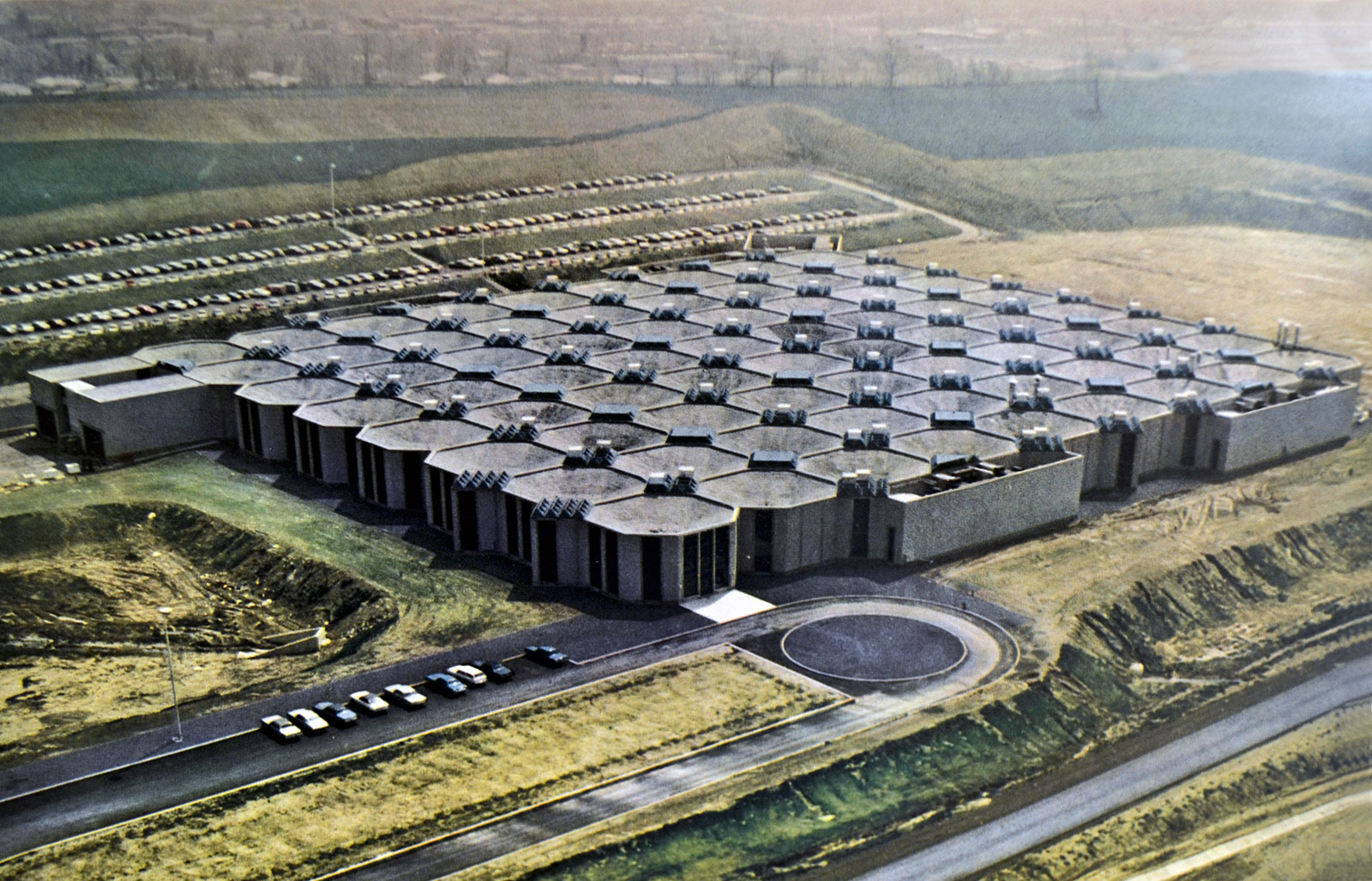
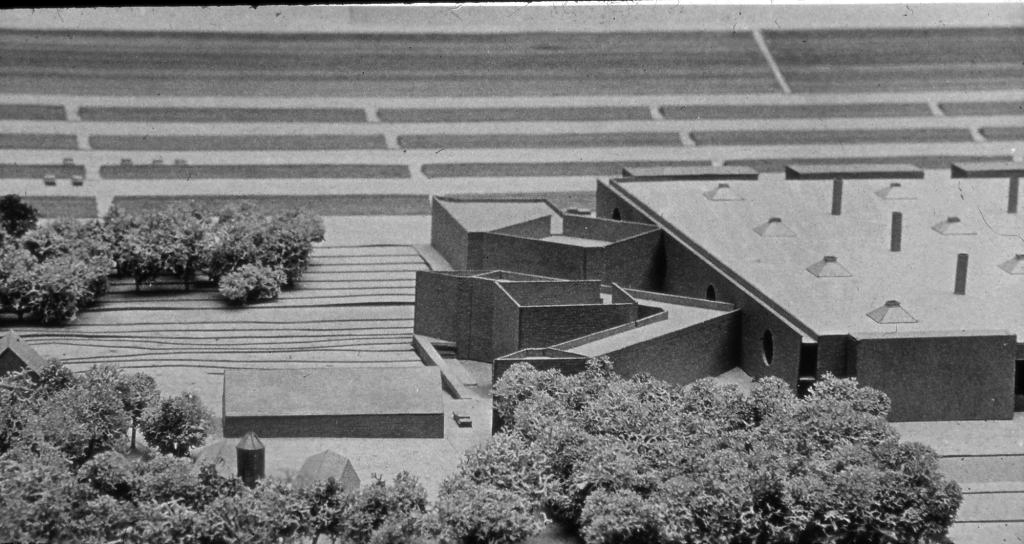
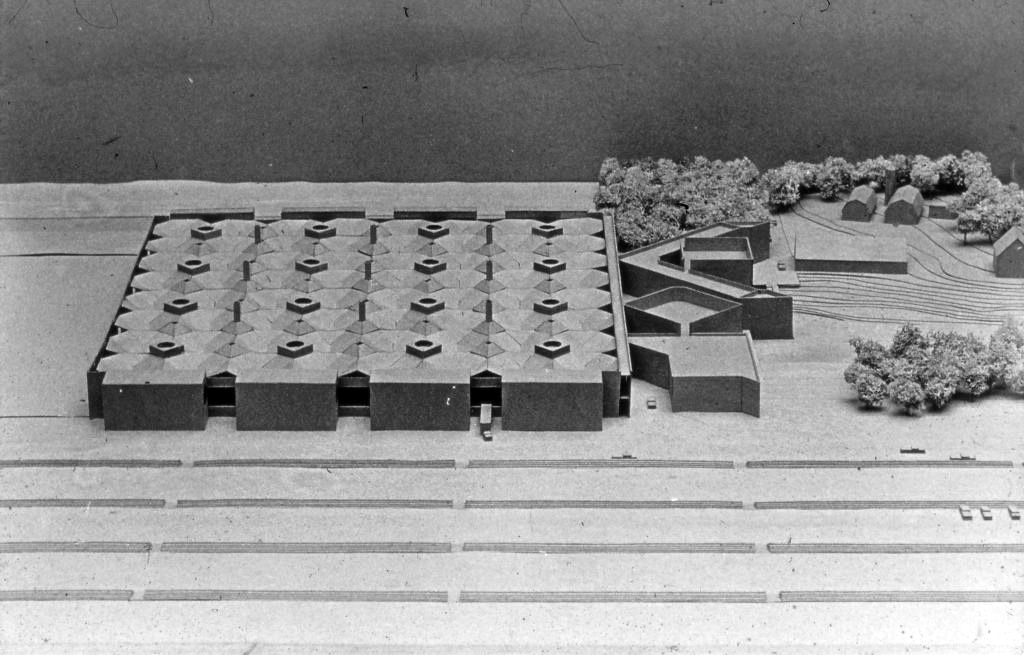

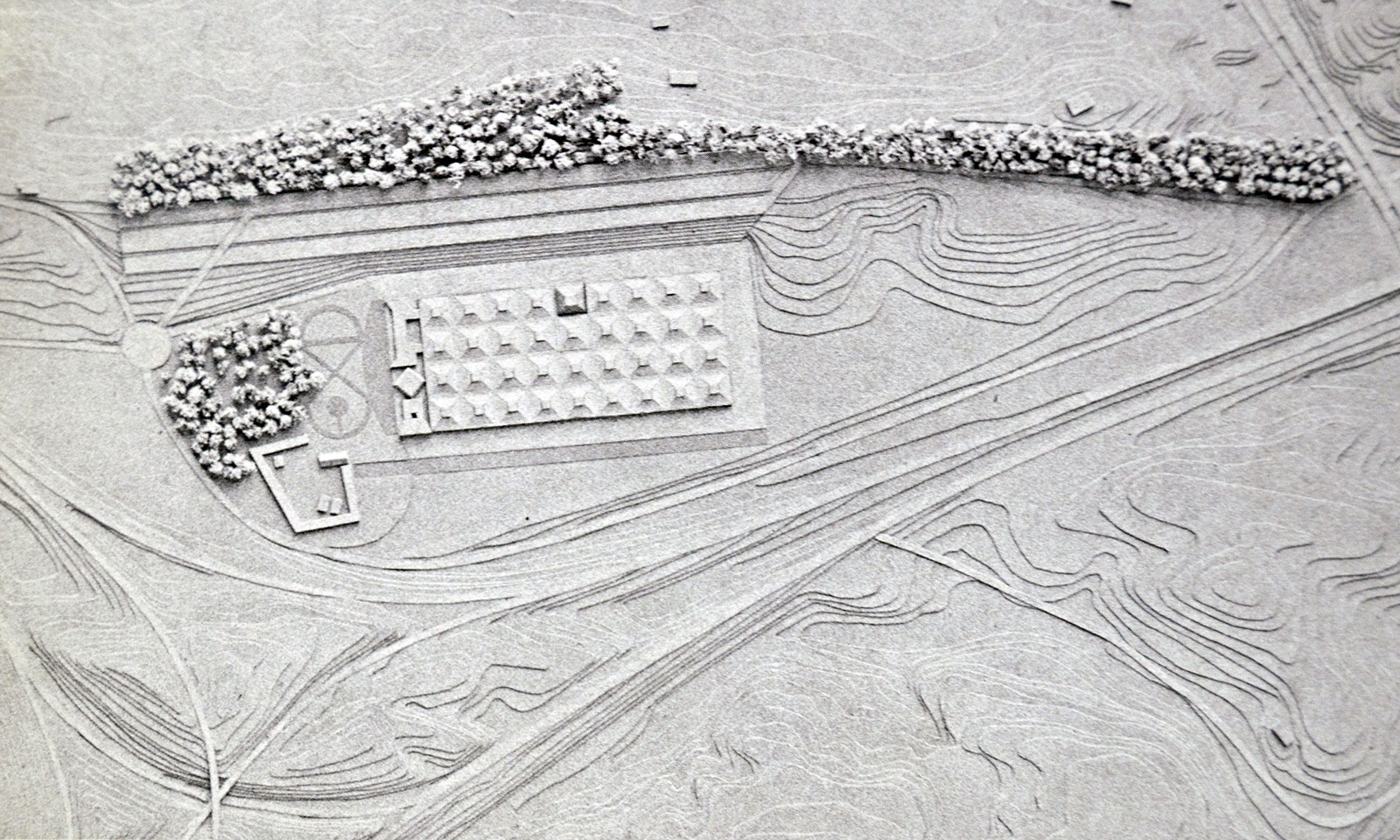
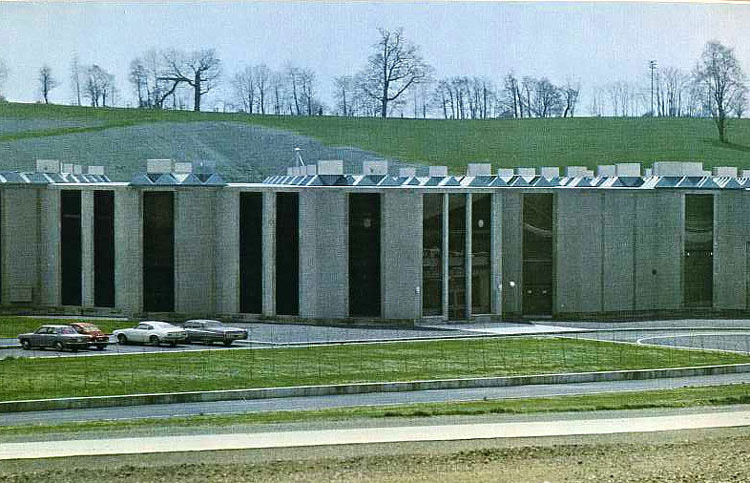
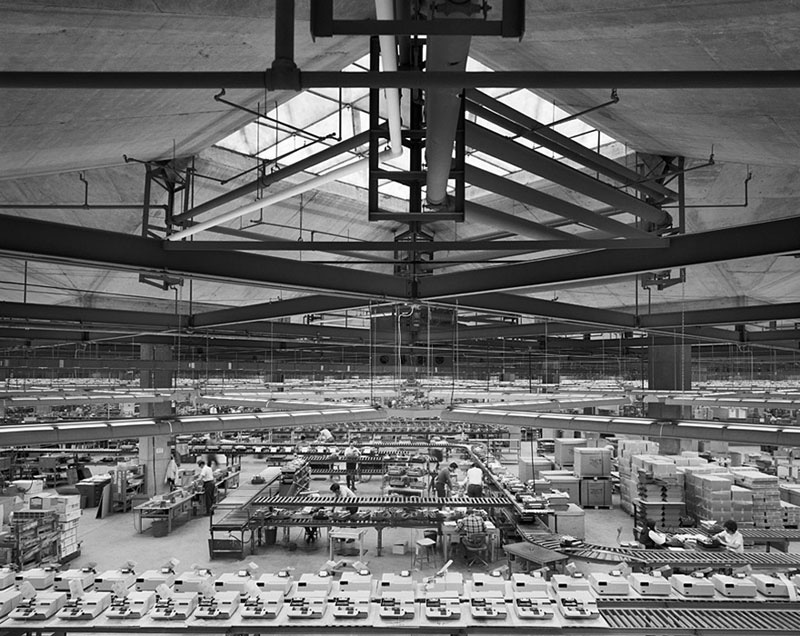
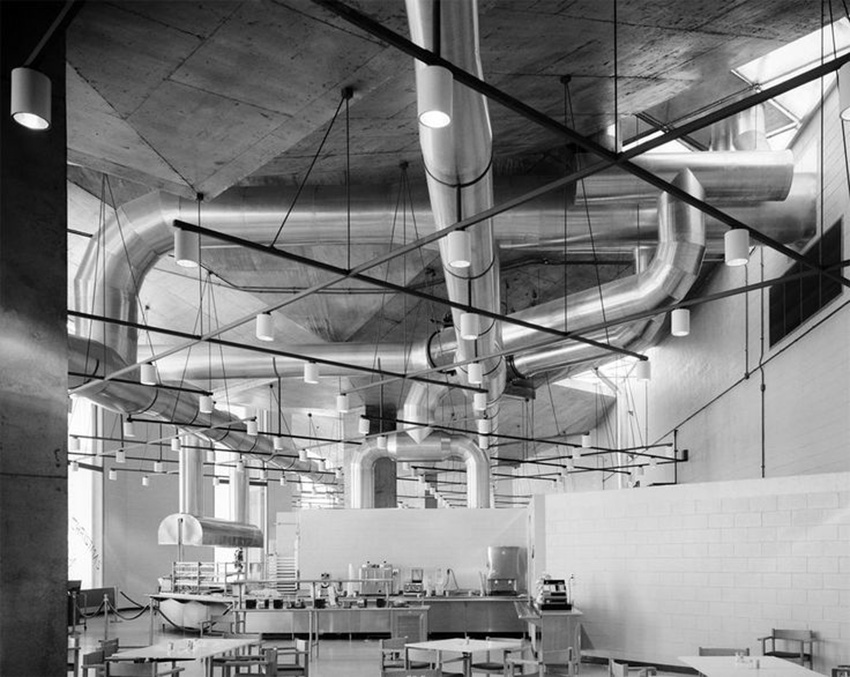
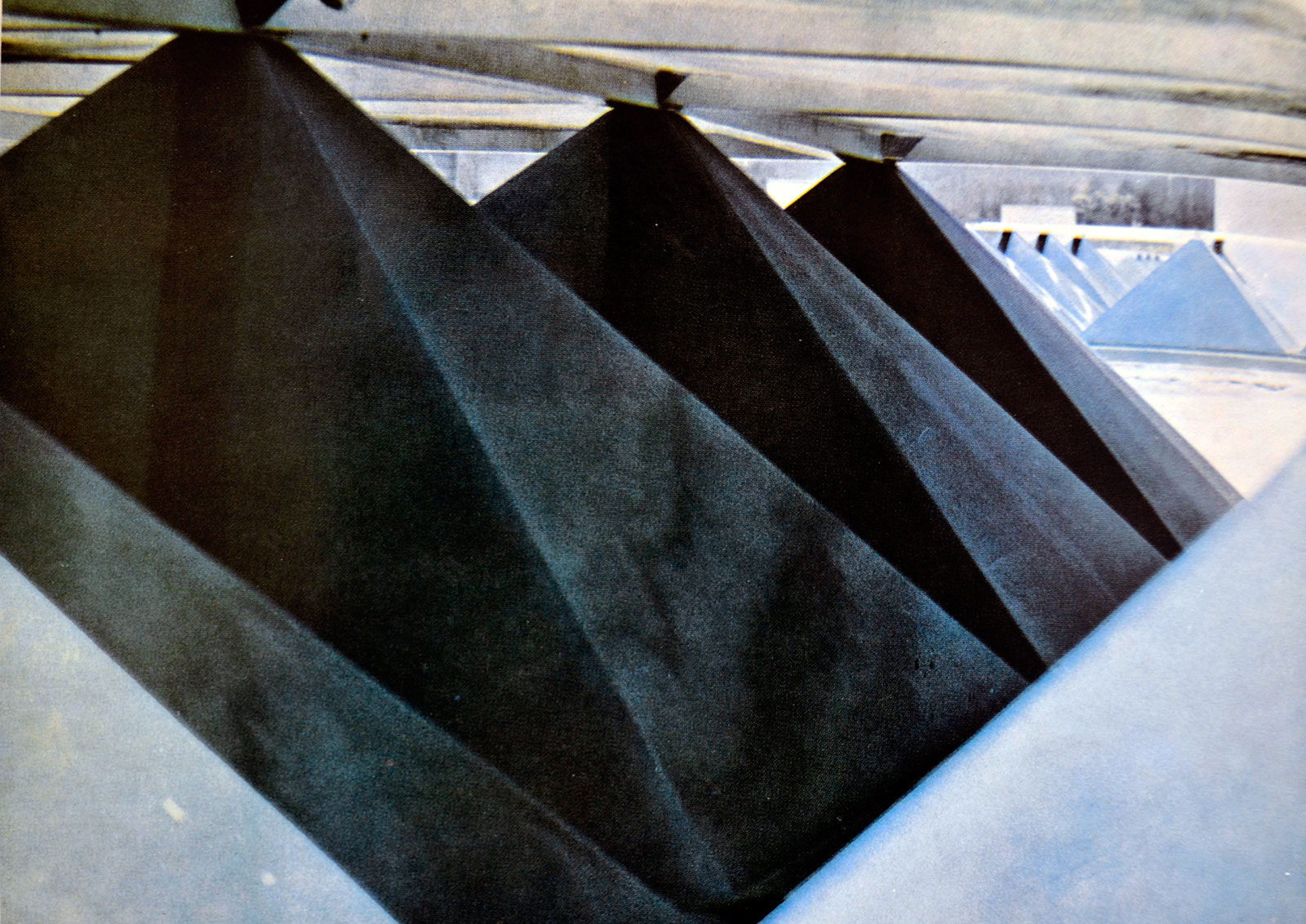
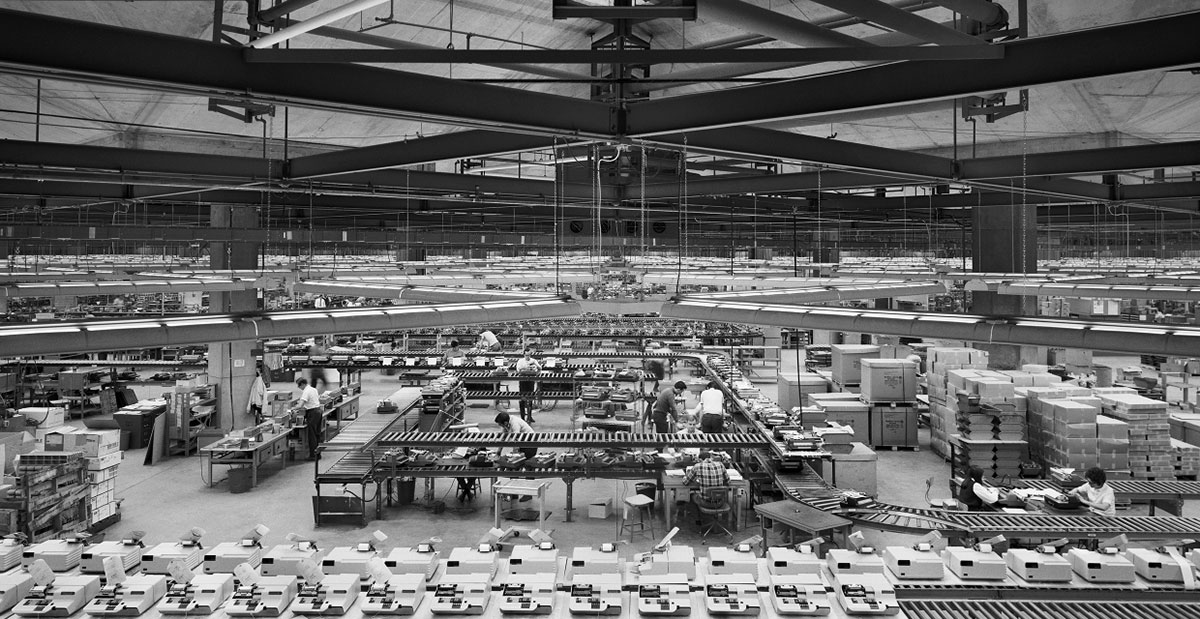
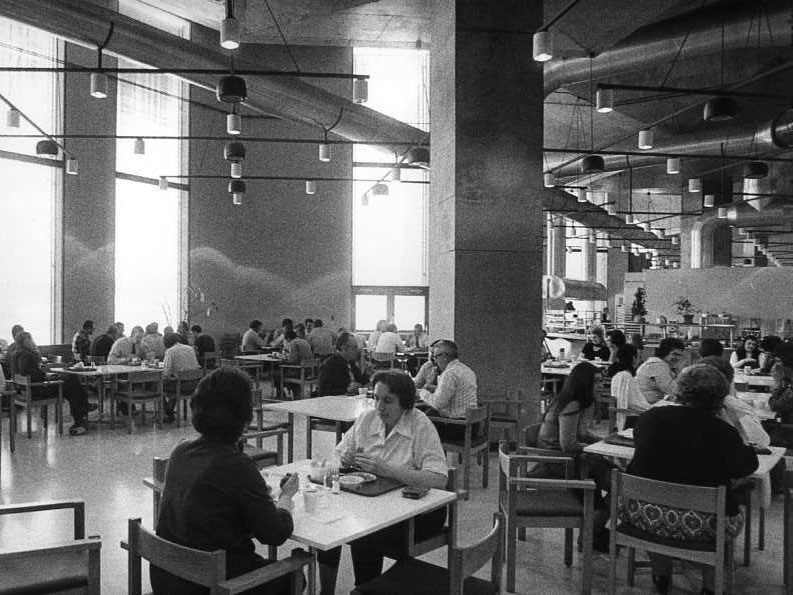
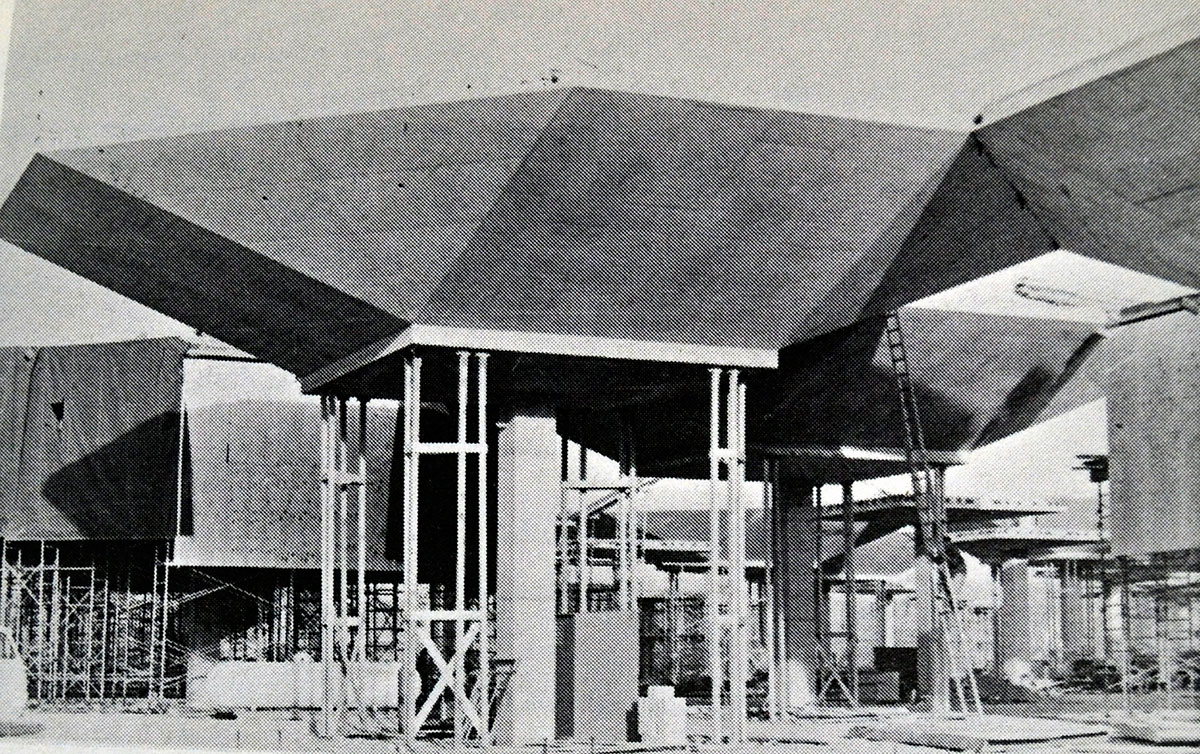
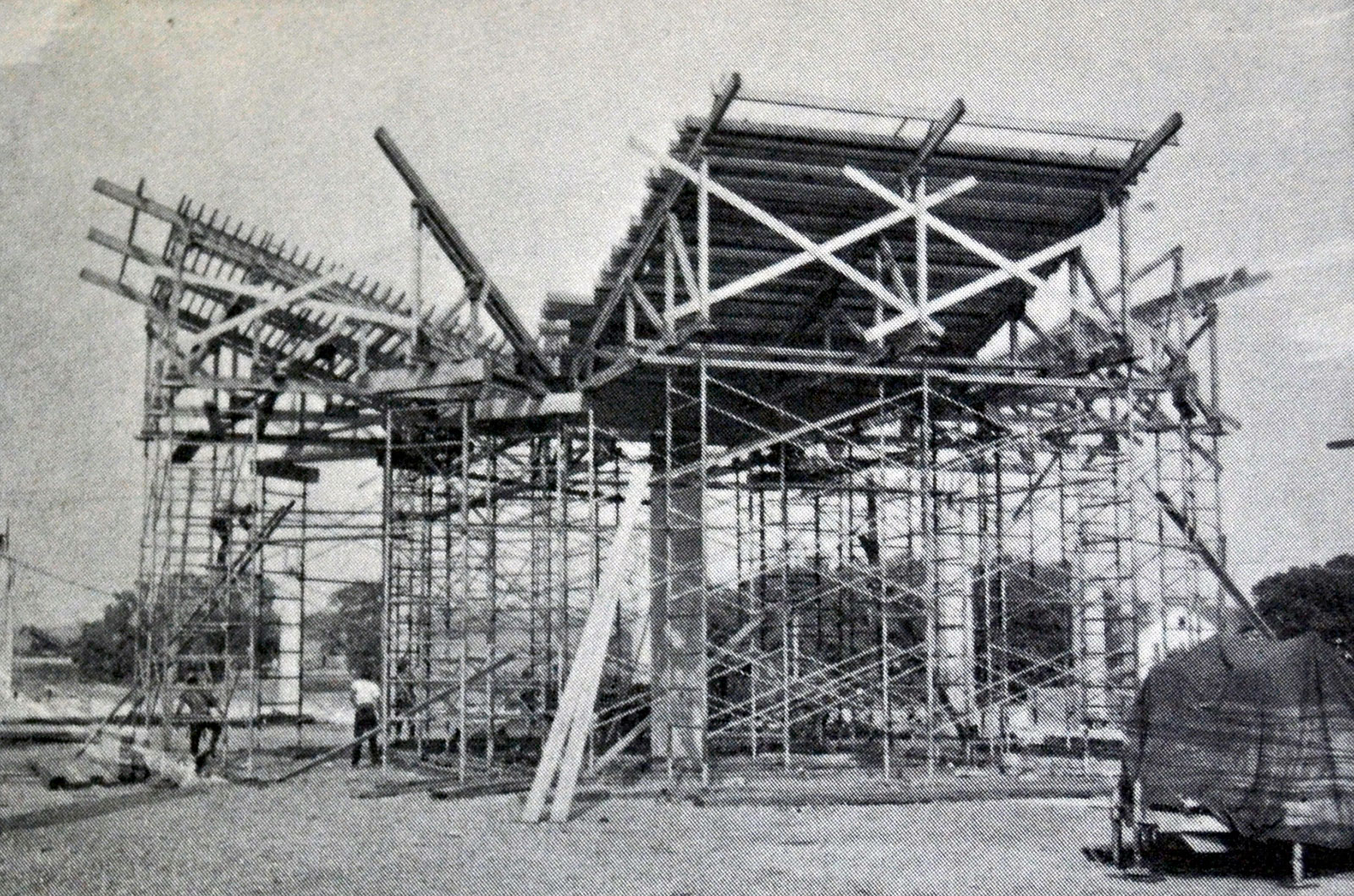



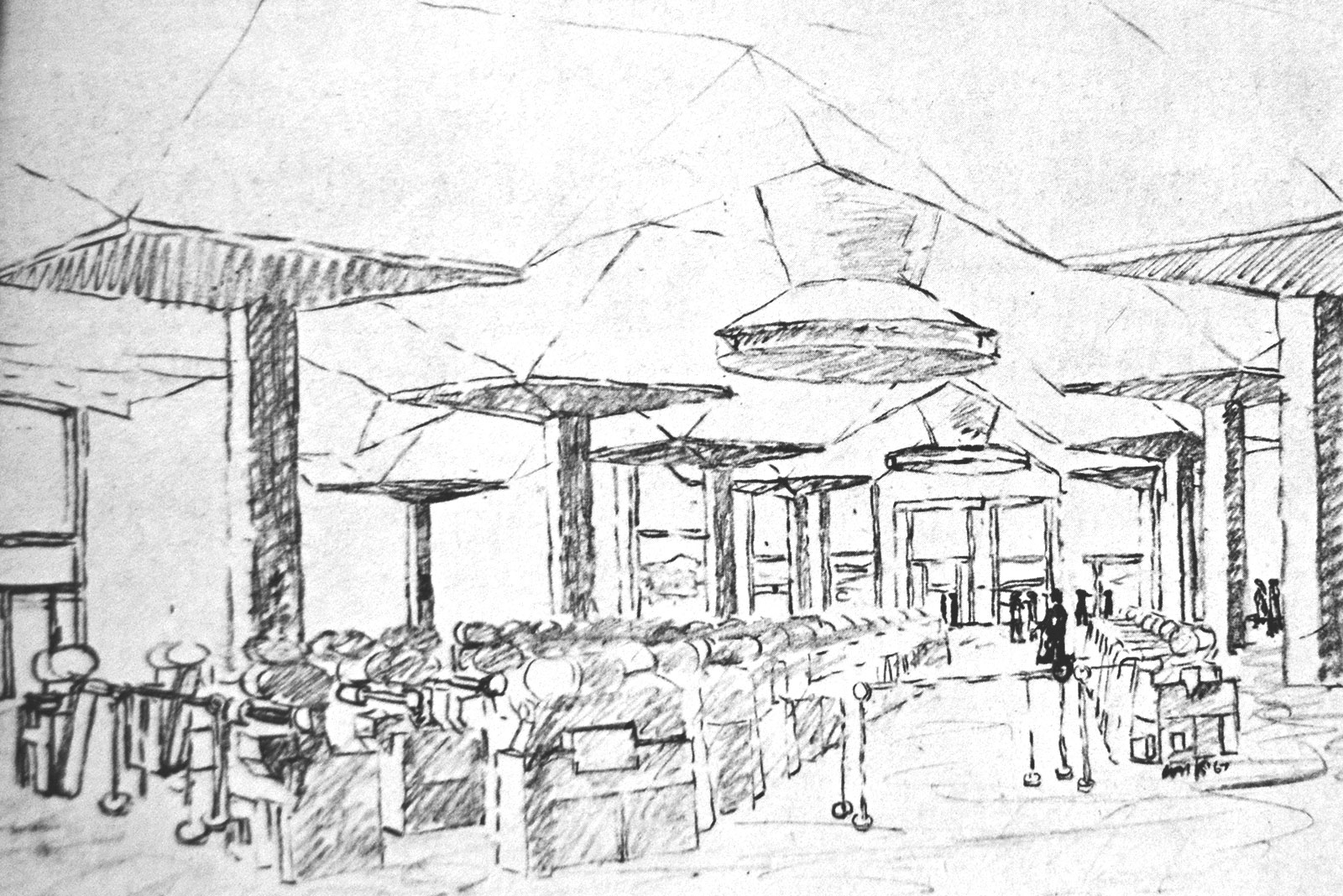

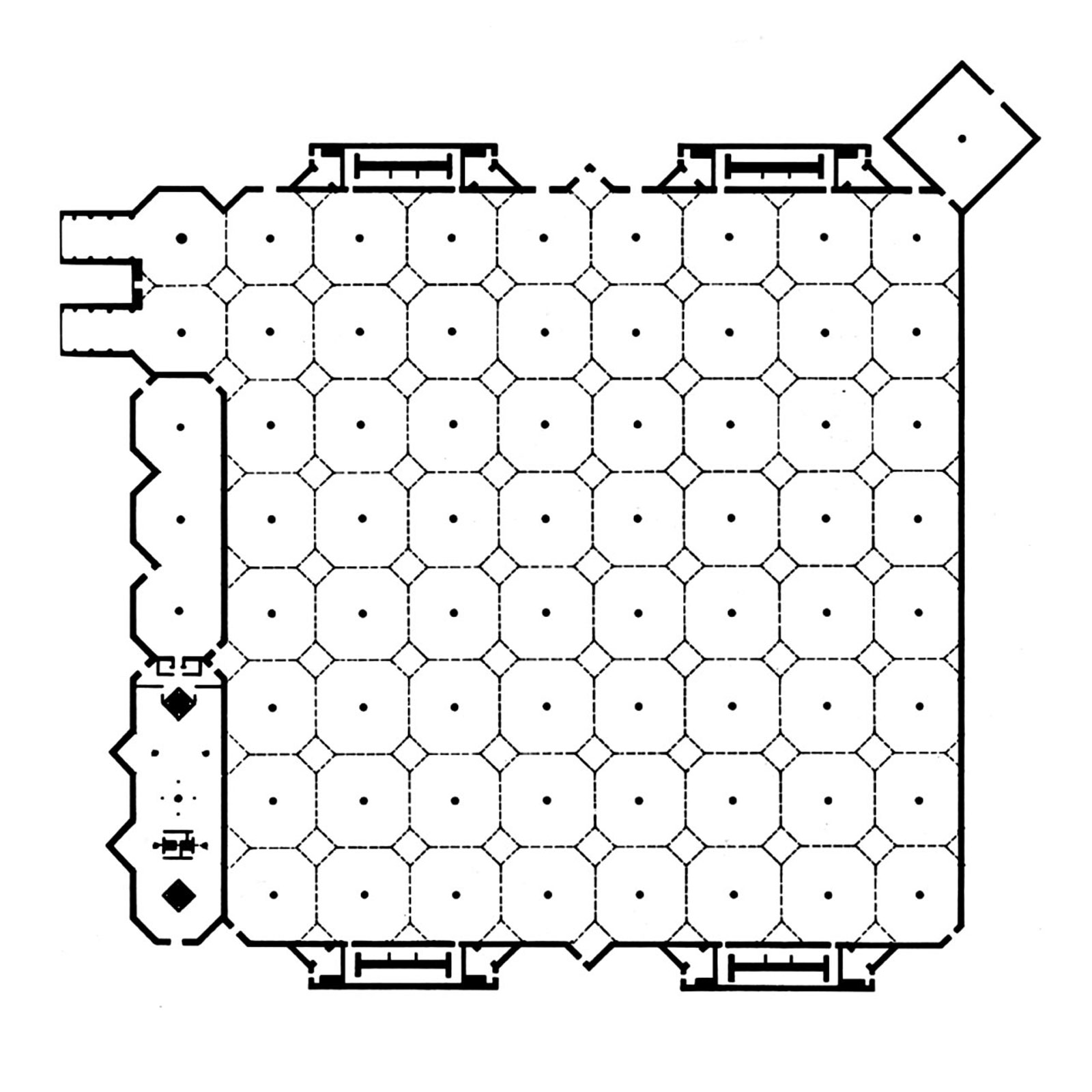
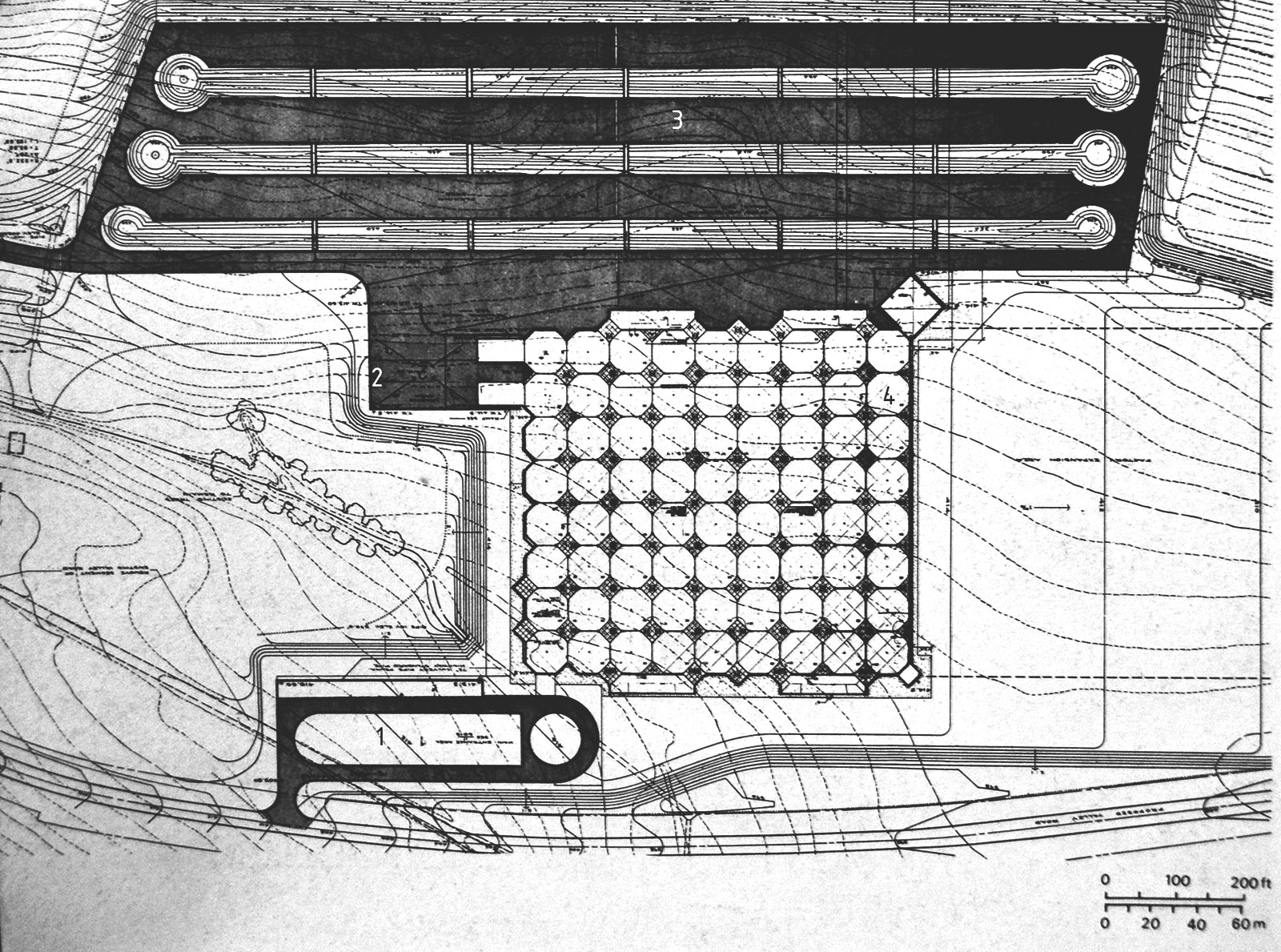
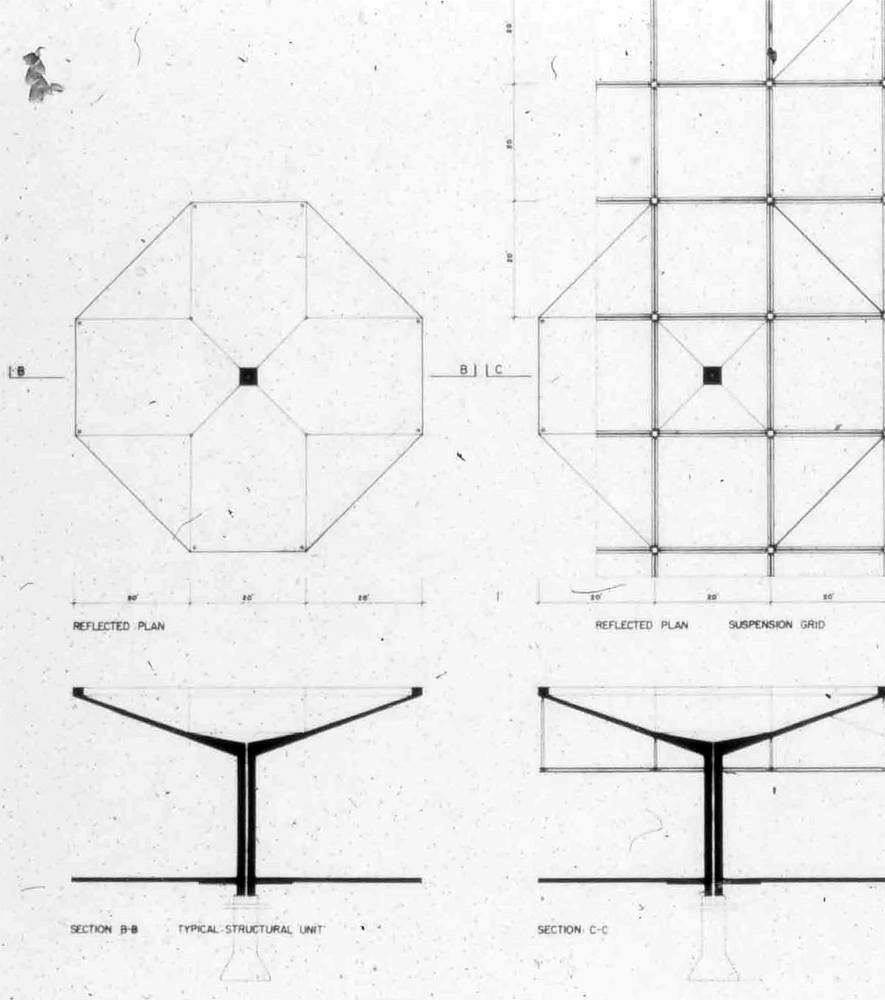
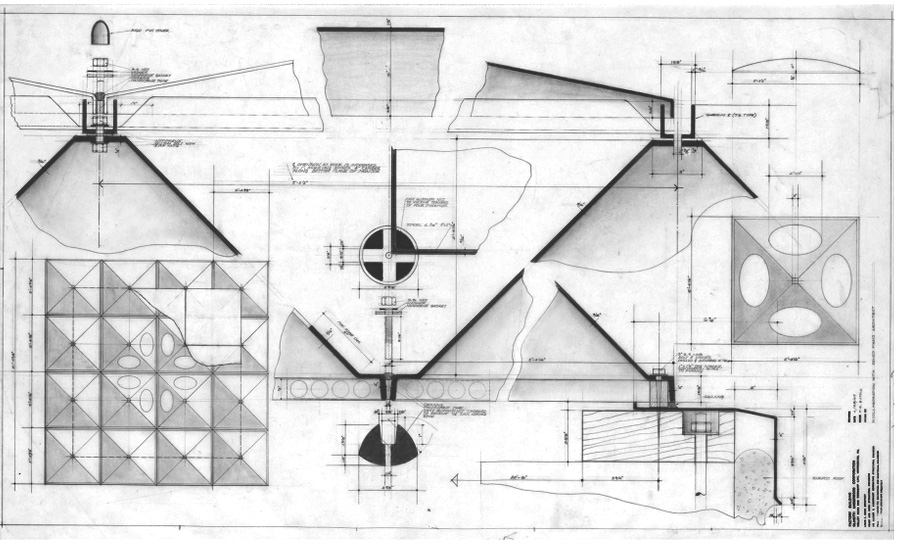
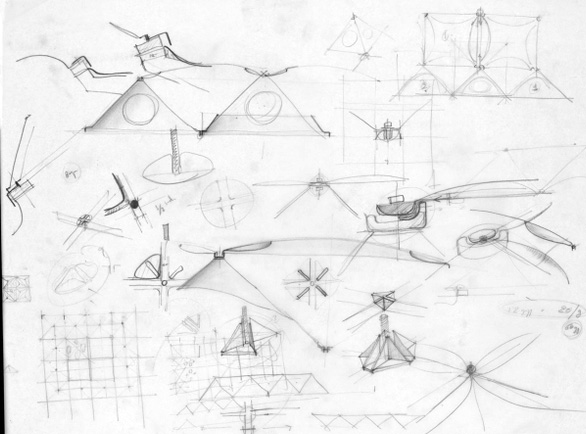
About Louis Kahn
Louis Isadore Kahn (1901 – 1974) was an American architect based in Philadelphia whose proposals and teaching made him one of the most influential architects of the twentieth century. Kahn created a monumental and monolithic style. For the most part, his massive buildings do not hide their weight, materials, or how they are assembled.
Full Bio of Louis Kahn | Works of Louis Kahn
- Structural Engineer: Keast and Hood; Dr. August E. Komendant (consulting engineer)
- Mechanical/Electrical Engineer: Paul H. Yeomans, Inc.
- Landscape Architect: George E. Patton
- Contractor: Barclay White
- Louis I Kahn: Revised and Expanded Edition by Robert McCarter
[cite]


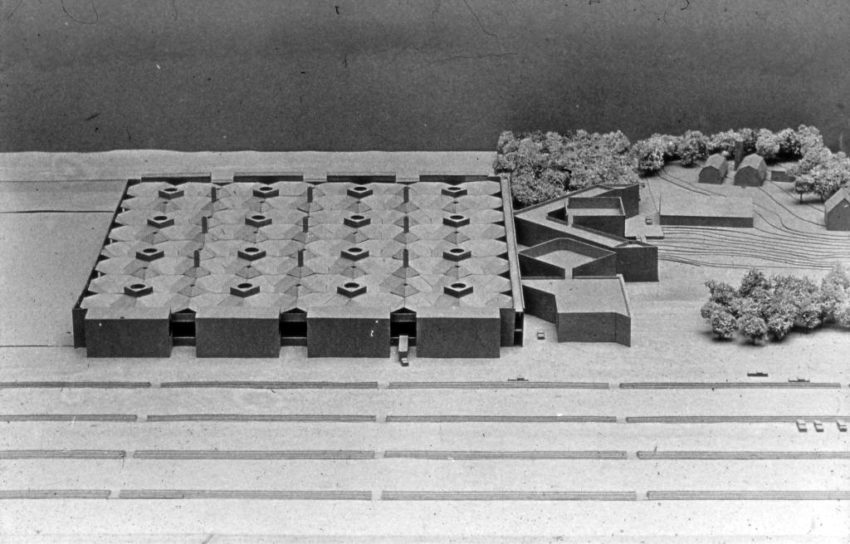
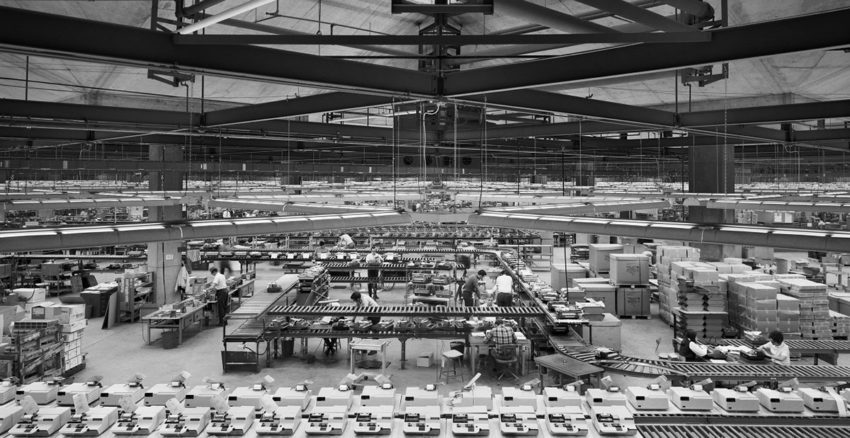
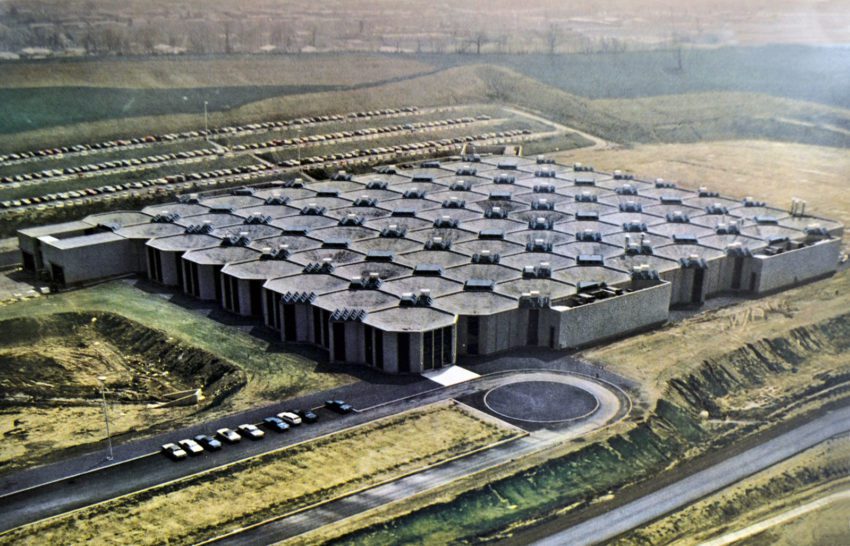
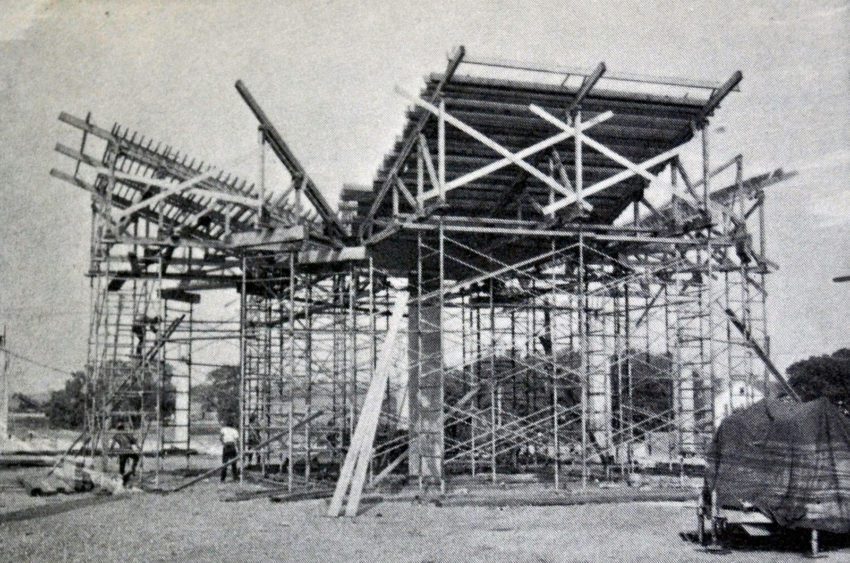

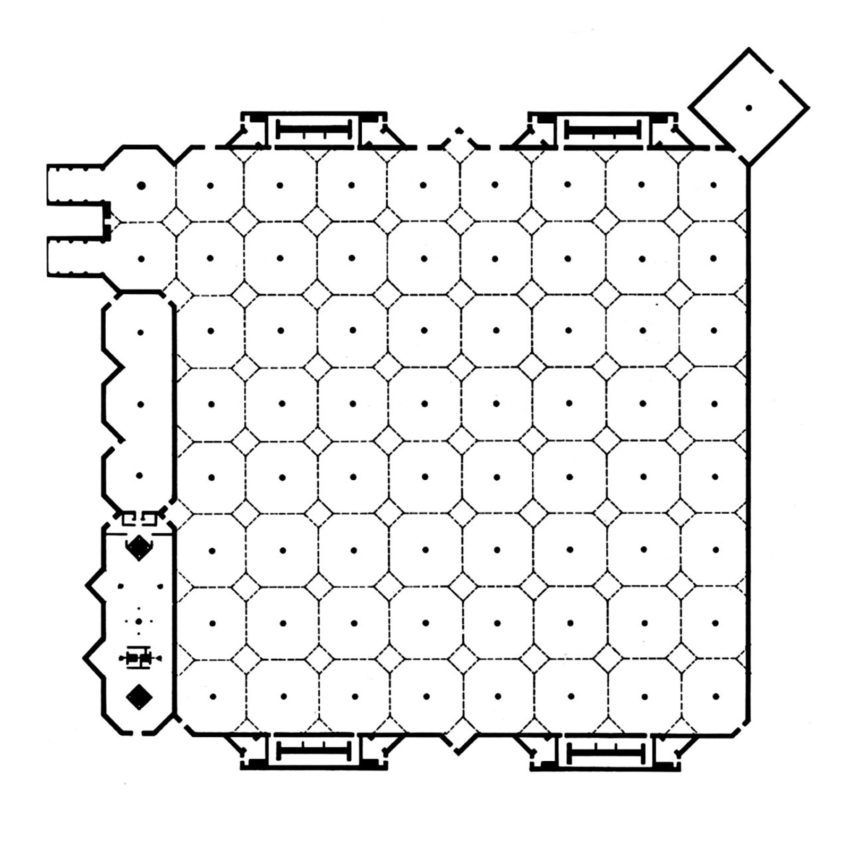
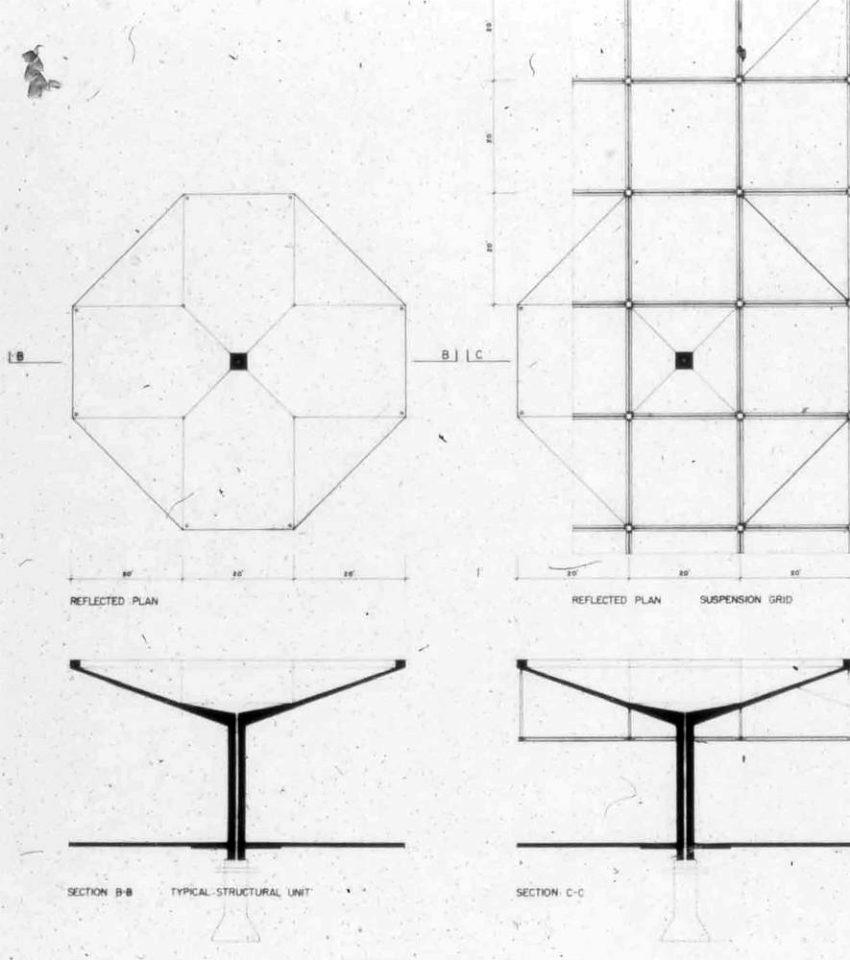


Thank you for your sharing! I’m getting ready to publish a book on the Renzo Piano’s Art Museum works. I wonder if it is possible to use the Aerial View pic in my book? Thanks!